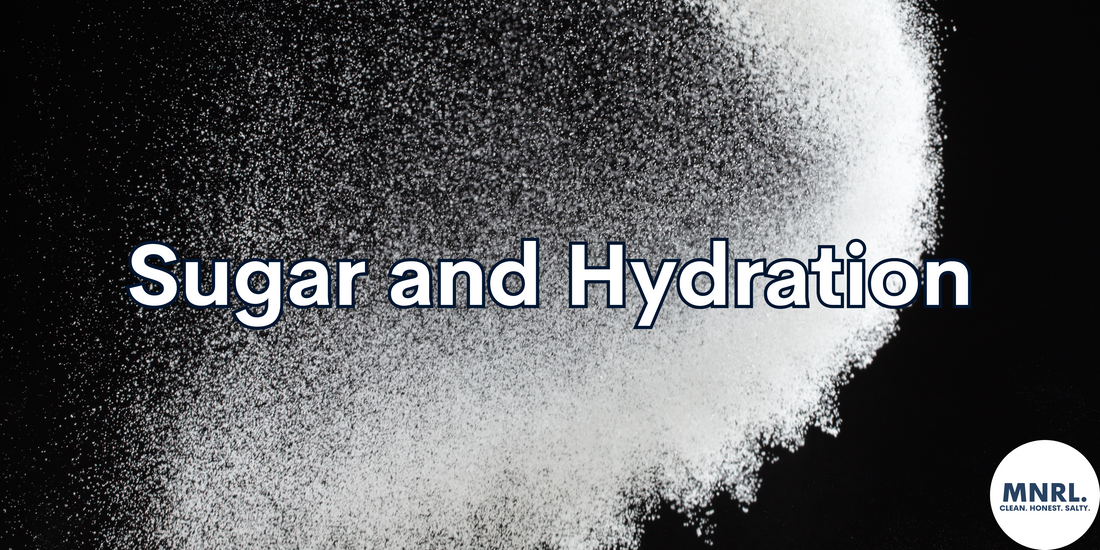
Sugar and Hydration
Share
We created MNRL when we discovered a giant hole in NZ for a hydration product that was affordable, grunty enough to actually work, and didn’t contain a heap of sugar or artificial ingredients. We’ve had lots of questions over this time about how MNRL compares to some other products on the market, that seem cheaper on the surface. So I’ve created the table below comparing some of the common options on the market in NZ. Some appear to be cheaper when you look at the cost per serve, but when I calculated what happens to the price when you match for sodium levels it told a very different story. Combine that with the sugar levels when matched for sodium intake and it becomes obvious that these products that are marketed as a ‘health product’ maybe aren’t so much. Others that have less sugar contain a heap of artificial sweetener like erythritol which has been linked to gut issues such as bloating, farting, diarrhoea, and worsening IBS/Chron’s disease/ulcerative colitis.
|
|
Sodium per serve |
Sugar per serve |
If equivalent sodium |
Cost per serve |
If equivalent sodium |
|
MNRL |
1000mg |
0.9g |
0.9g |
$2.30 |
$2.30 |
|
Powerade |
210mg |
44g |
209g |
$3.50 |
$16.66 |
|
Gatorade |
125mg |
15g |
120g |
$3.99 |
$31.92 |
|
Nothing Naughty |
56mg |
10.8g |
192g |
$0.47 |
$8.38 |
|
BioTrace Elite Drops |
127mg |
0g |
0g |
$0.59 |
$4.64 |
|
Pure |
100mg |
12.5g |
125g |
$0.73 |
$7.30 |
|
Musashi |
112mg |
0.3g |
2.7g |
$0.67 |
$5.98 |
Do we need sugar for hydration? Individual carbohydrate needs will be determined by a few factors, one is energy storage. By this I mean body fat and muscle mass. If a person has higher levels of body fat, they have thousands of calories of energy available and maybe don’t need to be consuming as much energy in the form of carbohydrates and fat. Muscle mass works in the opposite direction. Skeletal muscle stores glucose as glycogen, so that it can be readily available to use as fuel. If you have more muscle mass, you can store more glucose, therefore you can afford to eat more carbohydrates (assuming you also deplete those stores with exercise).
The other main factor in carbohydrate needs is activity. I like to think of activity on a spectrum of intensity, with walking or normal daily tasks at one end, and sprinting or lifting heavy weights at the other end. Where an activity sits along that spectrum will likely determine the best fuel source for that activity. Lower intensity exercise will be predominately fuelled by fat, a slower but more efficient fuel source, whereas high intensity exercise will be mostly fuelled by glucose/carbs, a faster, more immediately available fuel source. I get people to look at their daily activity and determine how much fat fuelled vs carb fuelled activity they’re doing and using this as a baseline to determine the fuels that they should be taking in through food. Herein lies the issue with sugary electrolytes. I think that most people are eating too many carbohydrates for the type of activity they are doing/their body composition. Adding a sugary drink on top of that doesn’t help anyone. It is true that sugar can aid in hydration, as it raises insulin in the blood, helping our kidneys hold on to electrolytes. But there needs to be some nuance and context here. Does adding more sugar on top of what most people are eating help with hydration? Probably not, and it’s likely be doing more harm than good.
